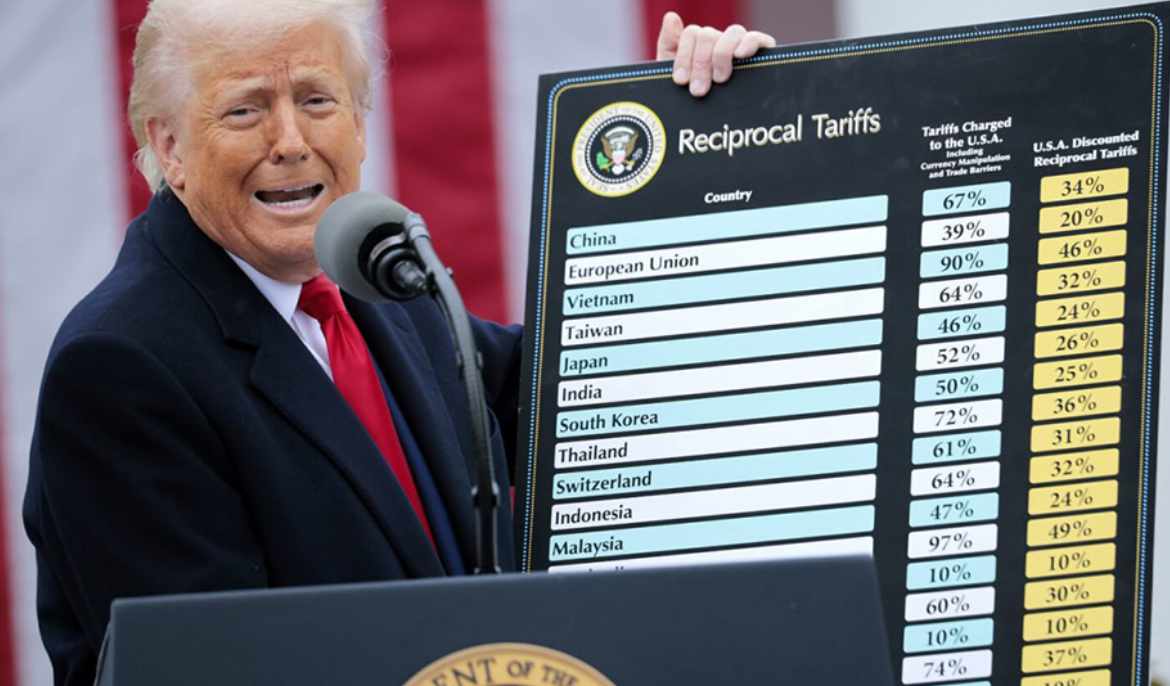ASEAN released an April 10 joint statement seekinga common dialogue with the US under the ASEAN-US Trade and Investment Framework Agreement (TIFA), an agreement which by which all ASEAN members states accept a joint track to negotiate with the US. The statement indicated a strong interest in maintaining a rules and market-based trading system in the region, which was “abandoned” by the US and the Trump administration.
Through the ASEAN process, each member state can also seek individual negotiations with US and other countries. With high “reciprocal” tariffs, three ASEAN members – Cambodia, Thailand and Vietnam– have expressed interest in bilateral negotiations with the US. As of yet, the remaining 7 ASEAN members have not expressed such an interest.
In fact, there is a general consensus among the members that collective and multilateral negotiation could be a stronger stance against the UStariffs.It has been suggested that collective and multilateral negotiations will maintain the rule-based trade and ASEAN centrality in the region.
Bilateral negotiations are expected to mitigate the trade diversion effects and this is critical to manage the decline in exports in the short run. However, recent bilateral negotiations with the US have not bornthe expected positive outcomes for South Korea, Japan and Thailand as the US has imposed extreme conditions to dismantle trade and investment in the region and with China. The key interest of the US appearsto favourbilateral negotiations as they can directly address the “China” question in each of the ASEAN nations.
Separately, China is observing the negotiations and the preferences offered to the US by eachrespective country, so the bilateral negotiations with the US have also put more pressure on the respective ASEAN members. Separately, China wants a more rule and market-based trade and prefersmultilateral agreements in the region.
In a recent meeting between US and China, both sides agreed to reduce most of their recently imposed tariffs for 90 days while negotiations continue. The US is lowering its main tariff on Chinese imports from 145% to 30%, while China is cutting its tariffs on US goods from 125% to 10%, and both sides are suspending or removing the additional tariffs and non-tariff measures introduced since early April 2025.
However, while the recent meetings lowered the tariffs and created some traction for businesses to undertake trade activities, they did not reduce the level or degree of uncertainty created by Trump’s reciprocal tariffs.
Creating Resilience to Tariff Shocks
ASEAN and Cambodia should (a) engage bilaterally with the US, (b) seek new markets and products and (c) consolidate ASEAN Centrality and multilateralism in rule and market-based trade.
In 2024, ASEAN had arounda 16% share of exports to the US, while China had the largest export market share, at nearly 25%. The US is Cambodia’s largest export market with an almost nearly 37% share of the Kingdom’s total exports.
Recent simulations of Trump tariffs on Cambodia show only 76% of Cambodian exports to the US are affected by the tariff based on the Annex 2 of exemptions to US tariffs. This translates to just a20-25% drop of Cambodia exports if the extreme reciprocal tariff rate of 39% is imposed and added to existing tariffs, translating to a decline of just 1.5-2% in the Kingdom’s GDP.
The key to bilateral negotiations with the US is to mitigate the short-run decline of exports and seek a lower tariff rate on Cambodian exports. We should expect Thailand and Vietnam to have greater exposure to US reciprocal tariffs as they have a greater exposure to US trade in terms of complex GVC activities. This is the short-run mitigation strategy. The negotiations are not expected to create long-run liberalisation or border reform strategies forgreater trade and economic growth.
The medium-term strategy is to seek new markets and create resilience in the ASEAN and GVC with new technologies under the ASEAN framework of the ASEAN Economic Community (AEC).
The AEC blueprint 2045 will be released under Malaysia’s ASEAN Chairmanship. ASEAN should accelerate discussions with the EU on anASEAN-EU FTA and create alternative markets to the US. Further, Cambodia could explore bilateral FTAs outside of ASEAN and East Asia with selected countries in Europe, Latin American and Africa. This requires more structural transformation in green and digital technologies and a move up the global production value chain.
ASEAN should consolidate intra-regional trade in ASEAN and East Asia. As the US accounted for just16% share of ASEAN trade in 2024, the key is to consolidate the remaining 84% with China, the EU and the rest of World. This requires ASEAN centrality and the current ASEAN trade structure of multilateralism with rule and market-based trade. This is critical as the 80% trade share provide the structure for sustainable and resilience growth in the region.
To consolidate global trade and create resilience in ASEAN, it is critical for ASEAN to strengthen the RCEP framework, which is the largest global trading block of 30% of global GDP, 30% of global trade, 30% of the global population and almost30% of global FDI. The intra-regional trade in RCEP could be improved and increased.
Currently, TIFA is not the only platform for engaging the US, as TIFA only includes ASEAN and excludes the rest of East Asia. Further, there are 2 other key platforms where ASEAN can play an important role. The East Asian Summit (EAS), which includes major economies such as China, Japan, India, South Korea and Australia alongside ASEAN member states, provides opportunities for strategic dialogue on economic stability and security issues. Another channel is the APEC process. China will be the next APEC chair in 2026, and the ministers responsible for trade are planningto meet in mid-May.
Overall, we believe ASEAN has a bigger and positive role to play in the current global trade uncertainty.
Shandre Mugan Thangavelu is a professor at the Jeffrey Cheah Institute for Southeast Asia, Sunway University. Mao Sonariddh is a senior economist with the Cambodian Ministry of Economy and Finance. The views and opinions expressed are their own.



